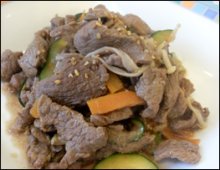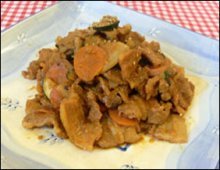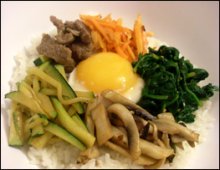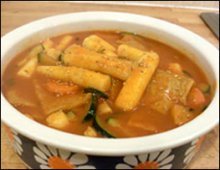Healthy Korean Food
What makes Korean food healthy
Korean food is well-known globally for being spicy, flavourful and delicious. But did you know that Korean cuisine also offers numerous health benefits? Korean cuisine is so healthy that South Korea boasts of an obesity rate of just 3.5 percent. Now, contrast that obesity rate with the likes of the United States (34.4%), the U.K (25%), Mexico (30%) and New Zealand (25%).

Many may attribute such low obesity rate to genetics of Asians in comparison with Caucasians - the latter being bigger in build than the former etc. - but that's not true either. Koreans are healthier than many people largely because of their diet, proof of which is the Cambridge World History of Food's report that the average Korean meal contains 13 percent less fat than those found in the diets of Americans and Europeans.
General Health Benefits of Korean Cuisine
Aside from the fact that Korean food lends itself well to a non-obese population, it also offers many other health benefits. Said benefits to good health will not come as a surprise once the ingredients, condiments and materials used as well as the cooking tools, techniques and technologies applied are considered.
The most common ingredients used in Korean cuisine are vegetables, which we all know to be full of the macronutrients and micronutrients essential in the maintenance of good health. From the side dish to the main dish and from fresh to fermented, vegetables like cabbages, bean sprouts and spinach are generously used. Add in the generous uses of garlic, ginger and other beneficial spices and Korean cuisine is very healthy.
Meat, by contrast, is used sparingly which magnifies Korean cuisine's health benefits. Even when it is a meat dish, the Koreans prefer the lean and healthy types like lean beef, chicken breasts and fatty fishes. As a result, the risks for cardiovascular diseases are significantly lower, thanks to lower saturated fat and cholesterol content in Korean cuisine.
The cooking tools, techniques and technologies used for preparing Korean food are the healthy types. Grilling, stir-frying, stewing and fermenting are the most popular ways to cook Korean cuisine, all of which means that the foods are cooked in their own juices. In contrast, many foods in countries with high obesity rates like the United States are deep fried in vats of oil.
Here are a few of the expected health benefits when one adopts the Korean mindset to food and Korean cuisine itself:
• Lower risks for cardiovascular diseases like hypertension as well as neurological illnesses like strokes and dementia
• Lower risks for certain types of cancer because of the anti-carcinogenic properties of vegetables
• Stronger internal organs especially the liver and the kidneys
• Better digestion because of increased appetite for easily digestible food
• Stronger bones due to the presence of isoflavones in beans and mushrooms
• Healthier skin since there are lesser amounts of preservatives
Nutrition Information of Healthy Korean Foods
Each of the popular Korean foods has its own health benefits by virtue of the ingredients and cooking techniques used on it. The following are just a few of most popular:

• Bulgogi is a grilled dish consisting of marinated barbecue beef although it can also be made from chicken (dak) and pork (dwaeji). Since this is grilled over an open flame, it cooks on its own juices and, hence, no fatty oils are used. Caloric content is 310 per serving.

• Jeyuk bokkeum is fiery pork served with rice, leaves of lettuce, Chinese cabbage, perilla (Sesame leaves) and other large leafy green vegetables as well as slices of raw garlic and chili peppers. Calorie per serving is 221.

• Bibimbap may have slightly higher calorie content - 560 calories for a single serving - than other types of Korean food but the health benefits are still there, nonetheless, thanks to the seasoned vegetables, tofu, egg, meat or seafood in the dish.

• Ddukbokki is made from rice cake combined with fish cakes, garlic and onions. Very hot and spicy has many of the benefits associated with gochujang and chilli's, as well as being very low in fat. Calorie count is 378 per serving.
A discussion on the health benefits of Korean cuisine will not be complete without mention of kimchi, a traditional spicy Korean condiment served from morning till night in virtually all dishes. It is known to improve the circulatory system because of the garlic, fish paste and chilli as its main ingredients,click here for more health benefits of Kimchi.
It's not just food which makes the Korean diet so healthy, South Koreans also gain a lot of health benefits from the drinks that they consume, the teas such as green and ginseng are full of anti-oxidants and aide the bodies systems while drinks containing barley like Shik-Hye and Barley tea, help the digestive system.
Adopting a Korean diet could help improve your health, help you loose weight, prevent diseases and improve your general well being, as the Korean wave continues to gather steam and spread around the world, don't miss out of one of the worlds most interesting cultures.
Return to Korean Foods
Top of Healthy Korean Food




